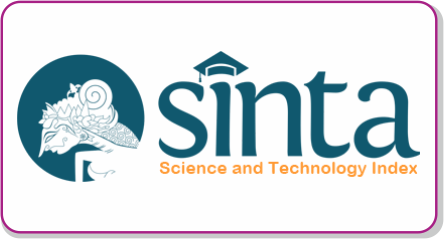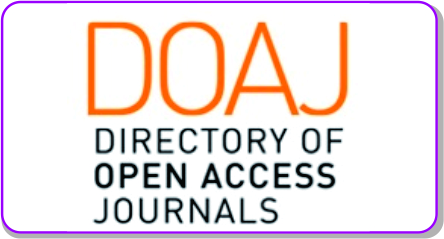Evaluating World Religion Paradigm through the Idea of Ultimate Reality
DOI:
https://doi.org/10.30983/it.v6i1.5537Keywords:
Cosmology, World Religions, Ultimate Reality, World Religion Paradigm.Abstract
This study aims to evaluate whether the idea of ultimate reality in world religions contributes to the characteristics of the world religion paradigm, which is hierarchical cosmology or “subject-object cosmology.†Several research on this topic claims that one of the characteristics of the world religion paradigm is its hierarchical perspective. Discussing this issue is important to distinguish the world religions as the paradigm and the world religions as the most widely embraced religion. This study argues that the hierarchical perspective of the world religion paradigm can be rooted in the idea of ultimate reality, that there is a supreme, foremost, and most principal reality in the continuity of this universe, namely the supernatural or God. The hierarchical cosmology consists of three main domains: supernatural/God, culture/human, and nature. This study uses a literature study methodology, relying on books, journals, and texts related to research questions. This study finds that the world religion paradigm or hierarchical cosmology or “subject-object cosmology†is prominent, especially in Abrahamic religions such as Islam, Christianity, and Judaism, even though the concept of ultimate reality in these three religions is different.
Â
Penelitian ini bertujuan untuk mengevaluasi apakah gagasan tentang realitas tertinggi dalam agama-agama dunia turut berkontribusi membentuk karakteristik paradigma agama dunia, yaitu kosmologi hierarkis atau “kosmologi subjek-objekâ€. Beberapa penelitian tentang topik ini mengklaim bahwa salah satu karakteristik paradigma agama dunia adalah perspektifnya yang hierarkis. Membahas masalah ini penting untuk membedakan agama-agama dunia sebagai paradigma dan agama-agama dunia sebagai agama yang paling banyak dianut. Kajian ini berpendapat bahwa perspektif hierarkis paradigma agama dunia dapat berakar pada gagasan tentang realitas tertinggi, bahwa ada realitas tertinggi, utama, dan paling utama dalam kelangsungan alam semesta ini, yaitu supernatural atau Tuhan. Kosmologi hierarkis terdiri dari tiga domain utama: supernatural/Tuhan, budaya/manusia, dan alam. Penelitian ini menggunakan metodologi studi kepustakaan, dengan mengandalkan buku, jurnal, dan teks-teks yang berkaitan dengan pertanyaan-pertanyaan penelitian. Kajian ini menemukan bahwa paradigma agama dunia atau kosmologi hierarkis atau “kosmologi subjek-objek†menonjol, terutama dalam agama-agama Abrahamik seperti Islam, Kristen, dan Yudaisme, meskipun konsep realitas tertinggi dalam ketiga agama tersebut berbeda.
References
Archer, Peter. “Religion 101: From Allah to Zen Buddhism, an Exploration of the Key People, Practices, and Beliefs That Have Shaped the Religions of the World.†Adams Media, 2013.
Asad, Talal. Formations of the Secular: Christianity, Islam, Modernity. American Journal of Islam and Society. United States of America: Stanford Universtiy Press, 2003.
Babbie, Earl. The Practice of Social Research. 14th ed. Vol. 22. Belmont: Cengage Learning, 2014.
Benedict, Canute T. One God In One Man. AuthorHouse, 2007.
Berlin, Adele, Marc Zvi Brettler, and Michael Fishbane. The Jewish Study Bible: Featuring The Jewish Publication Society TANAKH Translation. United States of America: Oxford University Press, 2004.
Billioud, Sébastien, and Joël Thoraval. “The Contemporary Revival of Confucianism.†China Perspectives 2008, no. 3 (2008): 88–106. https://doi.org/10.4000/chinaperspectives.4123.
Bryman, Alan. Social Research Methods. Fourth. Oxford University Press, 2012.
Chang, Ruth H. “Understanding Di and Tian: Deity and Heaven from Shang to Tang Dynasties.†Sino-Platonic Papers, no. 108 (2000).
Confucius. Confucian Analects, The Great Learning & The Doctrine of the Mean. United States of America: CreateSpace Independent Publishing Platform, 2016.
Corrigan, John, Frederick M. Denny, Carlos M. N. Eire, and Martin S. Jaffee. Jews, Christians, Muslims: A Comparative Introduction to Monotheistic Religions. Vol. 4. Routledge, 2016.
Cotter, Christopher R., and David G. Robertson, eds. After World Religions: Reconstructing Religious Studies. London and New York: Routledge: Taylor & Francis Group, 2016.
Cox, James L. From Primitive to Indigenous: The Academic Study of Indigenous Religios. Burlington, USA: Ashgate Publishing Company, 2007.
Debroy, Bibek, and Dipavali Debroy. The Rig Veda (Great Epics of India). UK & USA: Books For All / Low Price Publ., 2016.
Despeux, Catherine, and Livia Kohn. Women in Daoism. Three Pine Press, 2005.
Ellwood, Robert S., and Gregory D. Alles. The Encyclopedia of World Religions. New York: Facts On File, Inc, 2007.
England, Bradley W. “Encyclopedia of World Religions: Judaism, Christianity, Islam, Buddhism, Zen, Hinduism, Prehistoric & Primitive Religions.†New York: Octopus (in association with Phoenix), 1975.
Esposito, John L., Darrell J. Fasching, and Todd T. Lewis. World Religions Today. New York: Oxford University Press, 2018. https://doi.org/10.3366/swc.2007.13.3.301.
Grabbe, Lester L. Introduction to Second Temple Judaism: History and Religion of the Jews in the Time of Nehemiah, the Maccabees, Hillel, and Jesus. T&T Clark International, 2010.
Hart, Michael Anthony. “Indigenous Worldviews, Knowledge, and Research: The Development of an Indigenous Research Paradigm.†Journal of Indigenous Voices in Social Work 1, no. 1 (2010): 1–16.
Harvey, Peter. An Introduction to Buddhist Ethics: Foundations, Values, and Issues. United Kingdom: Cambridge University Press, 2000.
Hopfe, Lewis M., Mark R. Woodward, and Brett Hendrickson. Religion of the World. New York: Pearson, 2016.
Johnson, Paul. A History of the Jews. Harper Perennial, 1988. https://doi.org/10.5840/thought194823443.
Kementrian Agama RI. Al-Quran Tajwid Dan Terjemahnya, Terj. Lajnah Pentashihan Mushaf Al-Quran. Bandung: Syaamil Quran, 2010.
King, Richard. Orientalism and Religion: Postcolonial Theory, India, and “The Mystic East.†Orientalism and Religion. New York: Routledge, 2013. https://doi.org/10.4324/9780203006085.
Lawson, Todd. Reason and Inspiration in Islam: Theology, Philosophy and Mysticism in Muslim Thought. London, New York: I.B. Tauris Publishers, 2006.
Livingston, James C. Anatomy of the Sacred: An Introduction to Religion. New York: Macmillan, 1989.
Maarif, Samsul. “Ammatoan Indigenous Religion and Forest Conservation.†Worldviews 19, no. 2 (2015): 144–60. https://doi.org/10.1163/15685357-0190200.
———. “Dimensions of Religious Practice The Ammatoans of Sulawesi, Indonesia.†Oriens. Arizona State University, 2012. https://doi.org/10.2307/1578909.
———. “Indigenous Religion Paradigm: Re-Interpreting Religious Practices of Indigenous People.†Studies in Philosophy 44 (2019): 103–21. https://doi.org/http://doi.org/10.15068/00155157.
Masuzawa, Tomoko. The Invention of World Religions. Method and Theory in the Study of Religion. Vol. 20. London: The University of Chicago Press, 2005.
Merriam-Webster. “Ultimate Reality Definition & Meaning.†Accessed March 27, 2022. https://www.merriam-webster.com/dictionary/ultimate reality.
Miller, James. Daoism: A Beginner’s Guide. Oneworld Publications, 2003.
Moore, Diane L. Overcoming Religious Illiteracy: A Cultural Studies Approach to the Study of Religion in Secondary Education. Religious Education. United States of America: Palgrave Macmillan, 2007. https://doi.org/10.1080/00344080802427325.
Neuman, W Lawrence. Social Research Methods: Qualitative and Quantitative Approaches. 7th Revise. United States of America: Pearson Education Limited, 2014.
Nigosian, Solomon A. World Religions: A Historical Approach. Hampshire: Macmillan Publishers, 2007.
Phillips, Benjamin, Tammi J. Schneider, Shelley L. Birdsong, Andrew Kerr-Jarret, Guy Croton, Nicholaus PUmphrey, and Andrew Stobart. The Bible Book (Big Ideas Simply Explained). Dorling Kindersley, 2018.
Ramstedt, Martin. Hinduism in Modern Indonesia. Edited by Martin Ramstedt. USA & Canada: Routledge, 2004.
Saddhatissa, H. The Sutta-Nipata: A New Translation from the Pali Canon. London and New York: Routledge: Taylor & Francis Group, 2013.
Schmidtke, Sabine. The Oxford Handbook of Islamic Theology. Oxford University Press, 2016.
Smith, Huston. The World’s Religions. Harper San Francisco, 1991. https://doi.org/10.1177/001452468910000914.
Sutrisno, Evi Lina. “Negotiating the Confucian Religion in Indonesia: Invention, Resilience and Revival (1900 – 2010).†University of Washington, 2018.
Swearer, Donald K. The Buddhist World of Southeast Asia. Albany: State University of New York Press, 2010.
Taylor, Rodney L. Religions of the World: Confusianism. United States of America: Chelsea House Publishers, 2004.
The Jewish Publication Society of America. Torah: The Five Books of Moses. Illinois, USA: Varda Books, 2001.
Tzu, Lao, and John Minford. Tao Te Ching: The Essential Translation of the Ancient Chinese Book of the Tao. Viking, 2018.
Valea, Ernest. Buddhist-Christian Dialogue as Theological Exchange: An Orthodox Contribution to Comparative Theology. Cambridge, United Kingdom: James Clarke & Co, 2015. https://doi.org/10.2307/j.ctt1cgf201.
———. “Comparative Religion - The Ultimate Reality in World Religions,†2019. https://www.comparativereligion.com/god.html.
Vanhoozer, Kevin. Dictionary for Theological Interpretation of the Bible. North America: Baker Book House Company, 2005. https://doi.org/10.1177/004056390606700408.
Winter, Tim. The Cambridge Companion to Classical Islamic Theology (Cambridge Companions to Religion). Edited by Tim Winter. New York: Cambridge University Press, 2008.
Downloads
Submitted
Accepted
Published
Issue
Section
License
Authors who publish with this journal agree to the following terms:
- Authors retain copyright and grant the journal right of first publication with the work simultaneously licensed under a Creative Commons Attribution-ShareAlike 4.0 International License that allows others to share the work with an acknowledgment of the work's authorship and initial publication in this journal.
- Authors are able to enter into separate, additional contractual arrangements for the non-exclusive distribution of the journal's published version of the work (e.g., post it to an institutional repository or publish it in a book), with an acknowledgment of its initial publication in this journal.
- Authors are permitted and encouraged to post their work online (e.g., in institutional repositories or on their website) prior to and during the submission process, as it can lead to productive exchanges, as well as earlier and greater citation of published work (See The Effect of Open Access).













